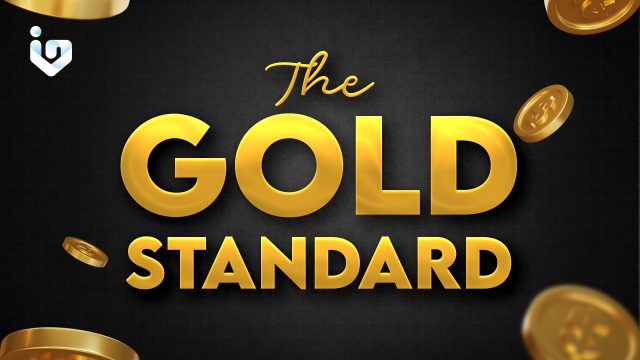Nowadays, governments have been printing lots of money. Practically injecting monetary systems with money, people have started to ponder where exactly does money base its value from?
The current monetary system today involves lots of complexities, but long ago fiat currencies used to be backed entirely by gold in a system known as the gold standard.
What is the gold standard?

The gold standard is a monetary system where a country’s currency is valued proportionally with gold. Countries agreed to convert paper money into a fixed amount of gold, whether if its to buy or sell fiat money.
An advantage of the the system was that it took control out of the hands of humans. Since gold has a limited supply, governments won’t be able to just print money on the go. Furthermore, the gold standard had the goal of preventing both inflation and deflation through sound governance.
However, one of the biggest advantages to the gold standard was simply that governments had to first acquire gold before they could increase the economy’s monetary supply. This ensured that reckless fiscal policies won’t occur. The downside of this is that economic growth could be hindered sometimes. Since gold needs to be acquired first, the government won’t be able to quickly inject liquidity into the economy.
What happened to the gold standard?
While many continue to support the gold standard, ultimately the majority decided to use the fiat currency system. Fiat currency is a type of currency that is not backed by a physical commodity, such as gold or silver. Instead, it is backed by the government that issued it. The value of fiat currency is derived from the relationship between supply and demand and the stability of the issuing government, rather than the worth of a commodity backing it.
As the old focused on ensuring the stability of the monetary system, the fiat currency was more focused on providing flexibility and greater power to central banks. This, however, came with the cost of greater vulnerability to inflation.
Will the gold standard come back?
The gold standard has its advantages. However, it is ultimately an inflexible system. While it does ensure stability, the lack of growth possible is too much of a trade-off. Given how fast trades and industries are currently growing, modern economies need to have a higher growth ceiling even at the cost of increased risks.
Furthermore, the gold standard won’t be able to promote inclusivity. Not all countries will have easy access to the commodity. Hence, not all countries will have an equal playing field in international trade.
How this ties up to the current financial markets

While we may no longer see gold having as big of a role as it had before, it is still one of the major commodities traded in the financial markets. By learning all about the gold standard, we already know that speculations on the return of gold as a major factor in fiscal systems are just that – purely speculative.
However, we do know that owning gold still has its benefits and can also have an impact on the financial markets in the future. Let us know if you want to learn more trivia about gold in the comments!

